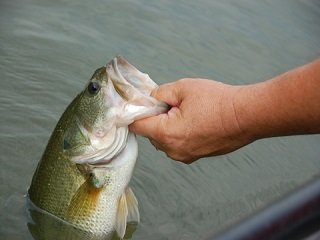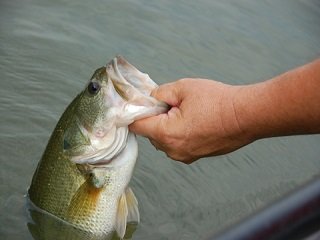 One thing you’ll notice when you spend some time in the bass fishing community is that each bass angler is unique. We all have our favorite lures, color patterns, and particular locations we like to fish on the lake. One type of location is structure and cover in deep water, where many anglers are finding great success in the form of huge bass. Here are a few tips to up your deep water fishing skill and cash in on those big bass.
One thing you’ll notice when you spend some time in the bass fishing community is that each bass angler is unique. We all have our favorite lures, color patterns, and particular locations we like to fish on the lake. One type of location is structure and cover in deep water, where many anglers are finding great success in the form of huge bass. Here are a few tips to up your deep water fishing skill and cash in on those big bass.
One key element to capitalizing on deep structure and cover is not using the trolling motor. Because most bass anglers are used to cruising along the shoreline, where they cover as much water as they can in search of fish, this is a hard habit to break when it comes to deep water fishing. However, here, you’ll want to find your spot and fish it. Simple as that.
Being prepared ahead of time is crucial, as well. Ensure that your lures are prepared and rods rigged before you even leave the house. Furthermore, take the time to inspect your tackle; trim skirts, thin weed guards and replace dull hooks all before you start the truck in the morning. If possible, rig multiple rods the exact same way, too. This will save time having to re-tie should you lose a lure, which is a great benefit when you find a school.
Fluorocarbon is a must when fishing deep cover and structure, due to its sensitivity, low visibility, and abrasion resistance. Check the cover to get a reads of how heavy your fluorocarbon should be.
Heavy jigs will be your best friend. Jigs with more weight get to the bottom faster and allow you to feel everything on the lake floor. Furthermore, they do a great job of attracting big bass. However, even when using something as efficient as a heavy jig, you have to be willing to switch things up if you’re not seeing results. Be open to swapping lures, or moving deeper or shallower.
As well all know, bass can be pretty skittish at times, so accuracy when casting is going to be very crucial around deep structure and cover. Make sure to hit the sweet spot on your first cast so you take advantage of their predatory instinct, rather than scare them off.
When you find deep cover and structure where fish are holding, look for patterns, such as whether they’re relating to rock or wood. Use what you discover to figure out if fish are relating to brush on flats, shad on drops, or big rocks on long points, etc., and utilize that knowledge on different areas of the lake.
Fishing deep structure and cover really isn’t as scary as some people make it out to be. Hopefully, the tips outlined above will prepare you for moving away from the shoreline now and then.








